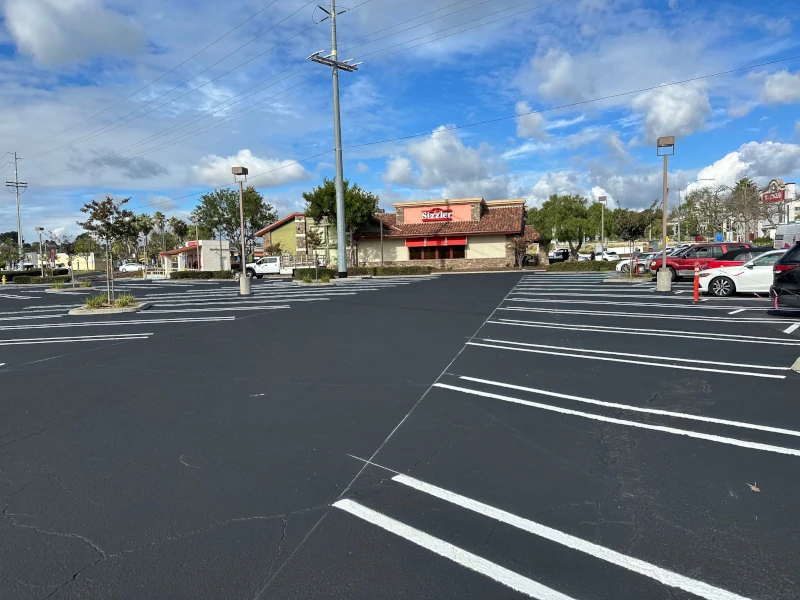If you manage a property with regular deliveries, garbage pickup, or bus traffic, you’ve probably noticed something: the pavement in those areas seems to wear out much faster than the rest of the lot. That’s no coincidence. Heavy vehicles put an outsized strain on asphalt, and even a few trucks a day can account for the majority of your lot’s wear and tear.
The Problem in Simple Terms
Here’s an easy way to think about it:
– A car causes very little wear when it drives across your lot.
– A fully loaded delivery truck or semi? It can cause the same damage as thousands of car trips.
This is because pavement damage grows exponentially with weight. Engineers call it the “fourth-power law,” but what matters to you is this: those daily trash trucks or delivery semis are doing the same damage as all of your customer cars combined.
Where the Damage Shows Up
If you look around your lot, you’ll probably see the same problem areas most property managers deal with:
– Loading dock lanes where semis back in.
– Dumpster pads where garbage trucks stop and turn.
– Drive-thru lanes that handle constant bus and truck traffic.
– Entrances and exits where trucks make tight turns.
These are the “stress zones” that fail early, and once cracks or ruts form, the rest of the pavement starts to follow.
What It Means for Your Bottom Line
A parking lot designed mainly for cars can last 20–25 years with routine maintenance.
But when heavy vehicles are part of the mix, lifespan can drop to 8–12 years if those areas aren’t reinforced or maintained more aggressively.
That difference can add up to tens of thousands of dollars in unexpected replacement costs. And beyond the cost, early failure means disruptions for tenants, customers, and your day-to-day operations.
How to Protect High-Traffic Areas
The good news: you don’t have to accept a shortened lifespan as a given. With the right design and maintenance strategy, you can extend the life of your pavement significantly. Here are a few smart approaches:
– Reinforce high-traffic areas with thicker asphalt layers, stronger base during construction or resurfacing or optioning for concrete.
– Stay ahead with maintenance — sealcoating and crack sealing on a tighter schedule in heavy-traffic zones.
– Use concrete pads at dumpster areas, loading docks, or bus stops where asphalt would otherwise break down quickly.
– Design truck routes that steer heavy vehicles away from customer parking areas.
A proactive plan will always be cheaper than waiting for those ruts and cracks to force a full replacement.
Final Takeaway
Your parking lot is one of your property’s biggest investments. Light car traffic and heavy truck traffic don’t create the same wear, so your maintenance plan shouldn’t treat them the same.
If your property sees regular truck, bus, or delivery traffic, now is the time to plan. A quick inspection of your heavy-traffic zones can save you years of life and thousands of dollars down the road.
Need help creating a heavy-traffic maintenance plan? Contact us today and let’s walk your lot together.
